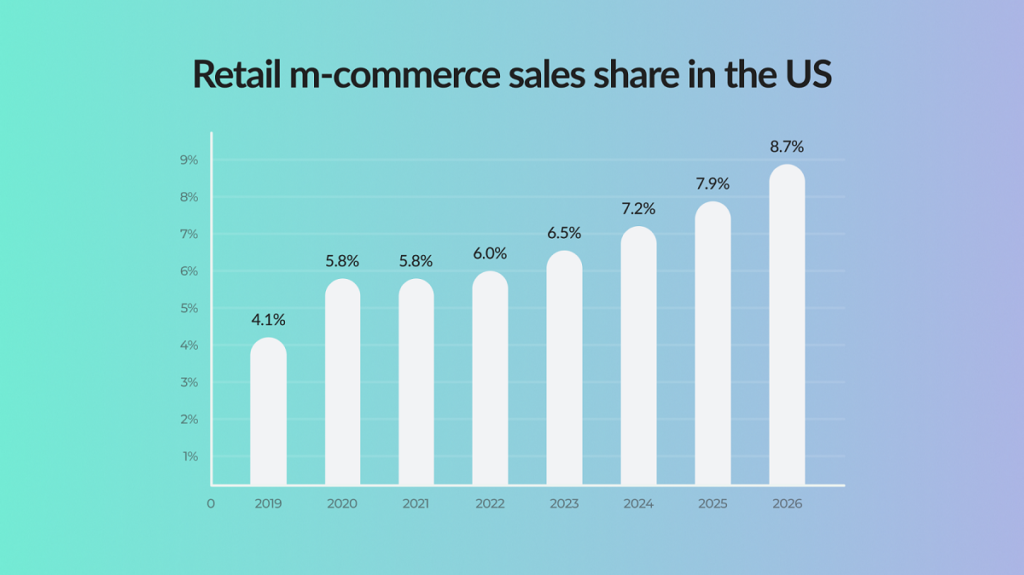Shopping App Creation Guide: Everything You Should Know in 2023

A lot of shopping giants like Amazon, Etsy, or Aliexpress have discovered that a web presence is not enough for successful business activity satisfying clients’ needs. That’s why they’ve built shopping apps that help them attract new customers and boost their companies’ profitability. An ERP system can streamline inventory management for a shopping app, ensuring that products are accurately tracked and available for purchase.
A smartphone app for shopping can also change your business. In order to give you a hint of how to develop it and implement it into your company flows, we’ve created this post. You can grab here more details as to core features for your future app, steps to create it, well-known examples of such apps, and many more.
A Brief Market Study to Analyze and Think About
An app for shopping is highly beneficial for store owners and their clients because of the following:
- It gives customers easy access to items; a straightforward and user-friendly app interface helps people delight in shopping.
- The app provides users with personalized offers to make their item choice more customized.
- A mobile app can work quicker than a web resource because some elements are stored in your gadget’s memory.
- The store owners can boost their sales and engage new customers while implementing the app for shopping into their flows and constantly using it.
It’s not the entire list of benefits the shopping app can offer people. So that it grows in popularity more and more — and the statistics accurately prove it. Thus, E-Marketer’s research mentions that the number of mobile commercial operations will rise to $534.18 by 2024. The researchers say that this point will increase to 8.7%.

Tidio report also gives promising statistics regarding in-app purchasing operations, such as the following ones:
- Mobile sales number will increase by 2025 to more than $710 billion.
- Purchases made in the mobile app are 54% of total mobile commerce operations.
Thus, the stats data given above clearly show that the shopping app building should start now. And it’s high time to discuss what features are needed for the development flow and how to develop a shopping app.
Minimum Viable Product: What Functionality is Required?
One of the primary steps to creating a mobile shopping app is to make a functionality list for it. The IT specialists typically divide this list into the Minimum Viable Product (MVP) features needed for the correct working of the software and advanced functionality representing additional features for customer comfort. A successful shopping app creation often involves targeted B2B sales outreach to attract merchants and partners who can expand the app’s product offerings and reach.
Let’s enlist the core MVP functionality you should include in your shopping app:
- Simple registration/login
- Straightforward checkout
- Push notifications
- Payment gateway
- Easy search
- Client support

Online Store App Creation: Advanced Functionality to Add
There are more features that can be added to your shopping app functionality after MVP is checked and tested by the early users. We’ll define some of them below:
- Augmented Reality (AR) shopping
- Wishlist
- Location monitoring
- Suggestions
- Sharing, etc.
What Should You Know About the Shopping App Development Process, And Where to Begin With?
The key to success with a delivery of a profitable and easy-to-use shopping app is to entrust its development to the reliable hands of professionals. So, you first should find a trustworthy software development provider with deep expertise in creating online store mobile solutions.
You can discuss with the vendor all the tech questions you need to know, and offer them your notes as to how you see the future app’s interface or any other details. You can even come to them with a raw app concept, and they’ll do everything you need (e.g., market research, business model choice, platform type definition, or app development cost estimate).
Then, the shopping app creation flow will pass the following stages:
The discovery stage. The specialists define the workload to do, the composition of the team that will work on your project, its business aims, and so on.
Design creation. The UI/UX designers build the future interface of the app, including logos, buttons, simple navigation, and reachable zones.

Product functionality development and QA checks. The developers create the features sprint by sprint, and the QA engineers thoroughly check the developed functionality for bugs.
Release. Your shopping solution is finally checked by the QA team and published in the marketplaces.
Support and maintenance. The IT specialists don’t stop working on your solution after it’s released. They constantly check it for bugs and make hotfixes or integrate more functionality according to the users’ feedback.
Bottom Line
Preparing for a shopping app creation process includes a lot of activities. To facilitate your job, you can apply to a skilled mobile app provider deeply experienced in solution to all the issues connected to shopping software. The hybrid working model allows for a more flexible and efficient development process when creating a shopping app, enabling teams to collaborate seamlessly while optimizing resources. The vendor’s specialists will give you in-depth recommendations you require and deliver a full-fledged shopping app that will be profitable for your business, attractive for customers, and straightforward in use.
Author’s Bio:
Yuliya Melnik is a technical writer at Cleveroad. It is a web and mobile app development company in Ukraine. She is passionate about innovative technologies that make the world a better place and loves creating content that evokes vivid emotions.
